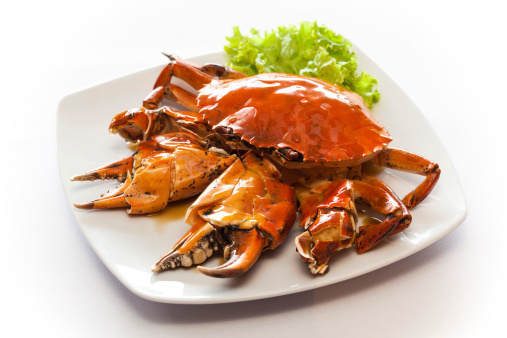 Crabbing season along the West Coast has hit a snag in the form of deadly neurotoxins brought about by an algae bloom. The Oregon Department of Agriculture (ODA) has issued a series of advisories regarding any shellfish caught between Cape Arago and the California border, along with a series of harvesting restrictions.
Crabbing season along the West Coast has hit a snag in the form of deadly neurotoxins brought about by an algae bloom. The Oregon Department of Agriculture (ODA) has issued a series of advisories regarding any shellfish caught between Cape Arago and the California border, along with a series of harvesting restrictions.
Algal blooms are not uncommon in the region, but this year has seen one of “unprecedented” magnitude, leading to a greater risk of exposure to domoic acid. As a source of amnesic shellfish poisoning, domoic acid can cause dizziness, headaches, vomiting, and mild cases of diarrhea. Severe poisoning can cause memory loss, seizures, and death. The current bloom is additionally troubling since crab meat is not normally affected by domoic acid.
The harvesting advisory only applies to shellfish taken from bays, estuaries, the open ocean, and off docks. Shellfish from commercial farms should not have been exposed to the algae bloom.
Unusually warm ocean waters—up by six degrees—are currently being attributed as the cause of the algae bloom. This rapid increase of the pseudo-nitzschia algae has affected regions as far north as Washington, where sea lions began dying and experiencing seizures in May. While live animals are able to remove domoic acid from their bodies, it is almost impossible to remove it from harvested meat. There is no known cooking, freezing, or preservation method that can remove the dangers of eating meat that contains domoic acid, so avoidance is the best strategy.
Oregon officials advise that if recreationally caught crabs are eaten, they should be eviscerated first. Domoic acid in crabs collects mainly in the guts, sometimes referred to as “butter.” Proper evisceration involves removing all internal organs and gills, leaving only muscle behind. Coastal scallops are currently considered safe when only the adductor muscle is eaten.
Along with the advisories, some species of shellfish have been declared off-limits due to domoic acid risk that cannot be mitigated by selective eating. All razor clamming across the Oregon coast and mussel harvesting from the mouth of the Yachats River to the California border has been closed. Washington and California have engaged similar measures to respond to their own affected shellfish populations.
It is hoped that the algae bloom and domoic acid levels will subside by the end of November, when Dungeness crabs become open to harvesting. Fall is an important time for crabbers and many earn most of their yearly income from the results of this seasonal harvest.
Sources for Today’s Article:
Harbarger, M., “Oregon Coast Crabs Could Have Lethal Toxin; One of Many Species Effected by West Coast Algae Bloom,” OregonLive web site, November 3, 2015; http://www.oregonlive.com/business/index.ssf/2015/11/oregon_coast_crabs_could_have.html.
“News Release: Crab Advisory Issued for Domoic Acid,” Oregon Department of Agriculture web site, November 3, 2015; http://odanews.wpengine.com/news-release-crab-advisory-issued-for-domoic-acid/.
Pascual, K., “Deadly Biotoxin Found In Dungeness Crab Prompts Health Warning,” Tech Times web site, November 4, 2015; http://www.techtimes.com/articles/102940/20151104/deadly-biotoxin-found-in-dungeness-crab-prompts-health-warning.htm.
